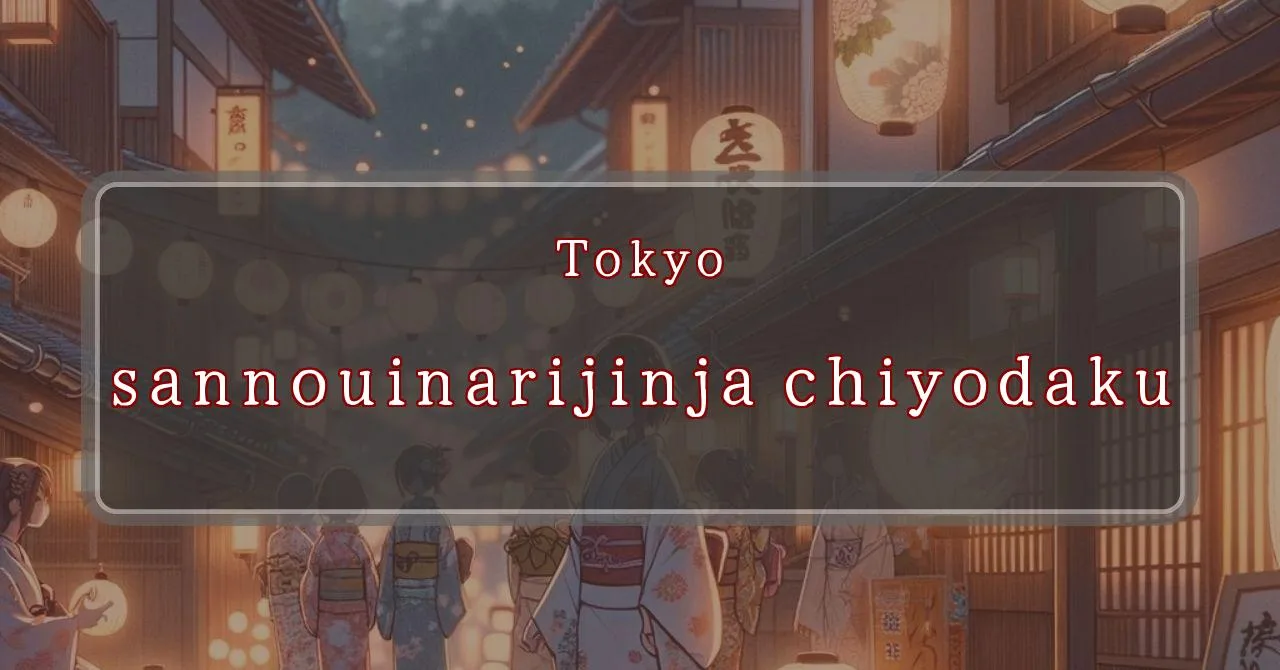Vivid vermilion shrine in the heart of Tokyo
Basic Information
Sanno Inari Shrine is a shrine located in Chiyoda Ward, Tokyo, Japan. It is dedicated to Inari, the Shinto deity of rice and sake.
- Address: 2-10-5 Nagatacho, Chiyoda-ku, Tokyo 100-0014
- Phone Number: 03-3581-2471
- Access: 5-minute walk from Kokkai-gijidomae Station on the Tokyo Metro Chiyoda Line, or a 3-minute walk from Tameike-sanno Station on the Tokyo Metro Ginza and Namboku Lines.
- Festival Days: April 28th, 2024
Main Events and Attractions of the Festival
The Sanno Inari Shrine Festival is a lively and colorful event that attracts many visitors each year. The main events and attractions of the festival include:
Mikoshi Procession
One of the highlights of the festival is the mikoshi procession. A mikoshi is a portable shrine that is carried through the streets by a group of people. The Sanno Inari Shrine mikoshi is particularly impressive, as it is decorated with elaborate carvings and colorful tapestries.
Kagura Dance
Kagura is a traditional Japanese dance that is often performed at Shinto festivals. At the Sanno Inari Shrine Festival, kagura is performed by a group of young women who wear colorful costumes and elaborate headdresses. The dance is said to bring good luck and prosperity.
Food Stalls
No Japanese festival is complete without food stalls! At the Sanno Inari Shrine Festival, you can find a wide variety of food stalls selling everything from traditional Japanese dishes to international cuisine. There are also many stalls selling souvenirs and crafts.
Fireworks Display
The festival concludes with a spectacular fireworks display. The fireworks are launched from a nearby park, and they light up the night sky with their brilliant colors.
- Mikoshi Procession: A parade of portable shrines carried through the streets.
- Kagura Dance: A traditional Japanese dance performed by young women in colorful costumes.
- Food Stalls: A variety of food stalls selling traditional Japanese dishes and international cuisine.
- Fireworks Display: A spectacular fireworks display that lights up the night sky.
Blessings and Deities
Sanno Inari Shrine is dedicated to Inari, the Shinto deity of rice and sake. Inari is also known as the god of fertility, prosperity, and worldly success. The shrine is a popular destination for people who are praying for good fortune in business, good harvests, and safe travels.
- Deity: Inari, the Shinto deity of rice, sake, fertility, prosperity, and worldly success.
- Benefits of praying at the shrine: Good fortune in business, good harvests, safe travels.
Origin and History
The origins of Sanno Inari Shrine are unclear, but it is believed to have been founded in the early 17th century. The shrine was originally located in the Akasaka district of Tokyo, but it was moved to its current location in Chiyoda Ward in 1659. The shrine was destroyed by fire in 1945, but it was rebuilt in 1958.
- Founded: Early 17th century.
- Original location: Akasaka district of Tokyo.
- Current location: Chiyoda Ward, Tokyo.
- Rebuilt: 1958.
Tips and Notes for Visitors
Here are some tips and notes for visitors to Sanno Inari Shrine:
- The shrine is open daily from 8:00 AM to 5:00 PM.
- Admission is free.
- The shrine is a popular destination for weddings and other ceremonies.
- There is a small gift shop on the shrine grounds.
- The shrine is located in a busy area of Tokyo, so it is best to visit during off-peak hours.
Parking Information
There is no parking lot at Sanno Inari Shrine. However, there are several public parking lots located nearby.
- Akasaka Parking Garage: 2-1-1 Akasaka, Minato-ku, Tokyo 107-0052.
- Tameike Sanno Parking Garage: 1-11-4 Nagatacho, Chiyoda-ku, Tokyo 100-0014.
- Kokkai-gijidomae Parking Garage: 1-7-1 Nagatacho, Chiyoda-ku, Tokyo 100-0014.
Popular Stalls and Food Carts in Recent Years
| Type of Stall | Description |
|---|---|
| Takoyaki | A staple at Japanese festivals. Characterized by a crispy outside and a creamy inside. |
| Jaga Butter | A simple yet popular snack of hot potatoes lavishly topped with melted butter. |
| Baby Castella | Small castella cakes, sweet and fluffy treats enjoyed by children and adults alike. |
| Grilled Ayu with Salt | Fresh ayu fish grilled whole with salt, a savory taste of Japanese summer. |
| Shaapin | A unique gourmet item influenced by foreign cuisine, with a chewy skin wrapping the filling. |
| Okonomiyaki | A Japanese grilled dish where you often choose your own ingredients for a personalized flavor. |
| Cotton Candy | A fluffy, sweet snack that’s extremely popular with children. |
| Chocolate Banana | A banana coated in chocolate, a fun and visually appealing dessert. |
| Kushiyaki | Various types of ingredients skewered and grilled, an easy-to-enjoy snack. |
| Yakisoba | Fried noodles mixed with a special sauce, a fast food favorite in Japan. |



